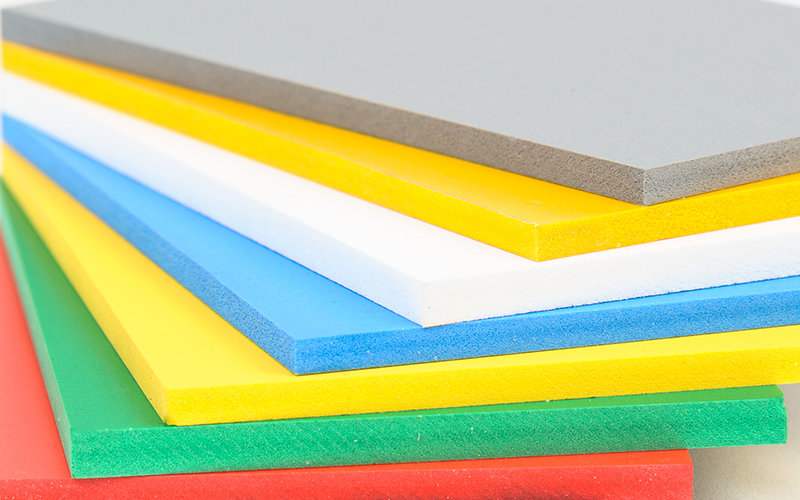Unraveling the Versatility of Plastic: Transforming Everyday Life
Plastic materials have become an integral part of our daily lives, transforming the way we live, work, and interact with the world around us. From the sturdy bottles that hold our beverages to the lightweight packaging that keeps our food fresh, plastic has become synonymous with convenience and functionality. As we delve into the versatility of plastic, it is essential to recognize the myriad ways this material permeates our everyday existence, often in ways we may not even realize.
The evolution of plastic materials has been nothing short of revolutionary. Originally developed for their durability and cost-effectiveness, plastics have since adapted to meet a diverse range of needs and applications. Today, they play vital roles in various industries, including healthcare, automotive, and technology, highlighting their significance not just in consumer products but also in enhancing quality of life. Unpacking the implications of plastic's versatility allows us to appreciate its contributions while also prompting important discussions about sustainability and innovation in material science.
Types of Plastic Materials
Plastic materials come in a variety of forms, each suited for different applications. One of the most common types is polyethylene, which is widely used for packaging, plastic bags, and containers. Its durability and lightweight nature make it incredibly popular in consumer products. Polyethylene is available in several forms, including low-density and high-density, each offering unique properties that cater to specific uses.
Another important category is polypropylene, which is known for its versatility and resistance to heat. This material is frequently used in automotive parts, consumer goods, and textiles. Its ability to withstand higher temperatures without losing structural integrity makes it a preferred choice in applications that require durability and reliability. Polypropylene is also recyclable, contributing to a more sustainable approach in the plastic industry.
Polyvinyl chloride, commonly known as PVC, is another significant plastic material that has both rigid and flexible versions. Rigid PVC is often found in construction materials such as pipes and profiles, while flexible PVC is used in plumbing, wiring, and various household items. Its resistance to environmental factors and chemical exposure makes PVC an essential material in many industrial applications, further demonstrating the wide-ranging capabilities of plastic materials in our daily lives.
Applications in Daily Life
Plastic materials play a crucial role in our daily lives, providing convenience and functionality across a wide range of products. From packaging to household items, plastics are present in nearly every aspect of our routines. For instance, food storage containers are often made from durable plastic, allowing us to preserve leftovers and maintain freshness without hassle. Additionally, plastic bags and wraps offer lightweight options for carrying groceries and protecting our food from spoilage.
In the realm of personal care, plastics are integral in the design of various hygiene products. Items like toothbrushes, hairbrushes, and cosmetic containers often utilize plastic due to its moldability and resistance to moisture. This versatility not only enhances user experience but also contributes to the overall efficiency of personal care routines. The impact of plastic in this sector demonstrates its ability to cater to individual needs while maintaining hygiene and safety. perspex plexi
Furthermore, the automotive and technology sectors heavily rely on plastic materials to create lightweight parts that enhance performance and fuel efficiency. Modern vehicles incorporate plastics in everything from dashboards to bumpers, reducing their weight while improving durability. Similarly, everyday tech devices such as smartphones and laptops utilize plastic for cases and internal components, balancing functionality with aesthetic appeal. The incorporation of plastics in these industries underscores their transformative role in shaping the future of everyday life.
Environmental Considerations

The widespread use of plastic materials in modern life has led to significant environmental challenges. Plastic waste accumulation is one of the most pressing issues, as many items take hundreds of years to decompose. Landfills are filled with discarded plastic, while oceans are increasingly polluted, affecting marine life and ecosystems. The durability that makes plastics attractive for various applications also contributes to their persistence in the environment, creating a need for better waste management and recycling solutions.
Recycling efforts are essential for mitigating the environmental impact of plastic materials. While many types of plastics can be recycled, the current recycling rates remain low, primarily due to a lack of infrastructure and public awareness. Innovations in recycling technologies and programs can significantly improve the situation, allowing for more efficient reclaiming of plastic waste. Additionally, the development of biodegradable plastics offers a promising avenue for reducing long-term pollution, though these alternatives must be further refined to be as functional as their conventional counterparts.
Consumer behavior plays a vital role in addressing plastic pollution. By making conscious choices, such as opting for reusable items over single-use plastics, individuals can help reduce the demand for new plastic materials. Education on the importance of reducing, reusing, and recycling can empower consumers to take action. Ultimately, addressing the environmental considerations of plastic materials requires a collaborative effort involving manufacturers, policymakers, and the public to create a sustainable future.
